Oct. 30 to Nov. 5
Chen Chuan-hao’s (陳傳鎬) dream was to join the army’s artillery unit, as he wanted to “use weapons that could hit the furthest targets to protect the nation and its people.”
He got his wish after graduating with high marks from the Republic of China (ROC) Military Academy in 1953, but unfortunately he suffered a spine injury that rendered him unfit for service.
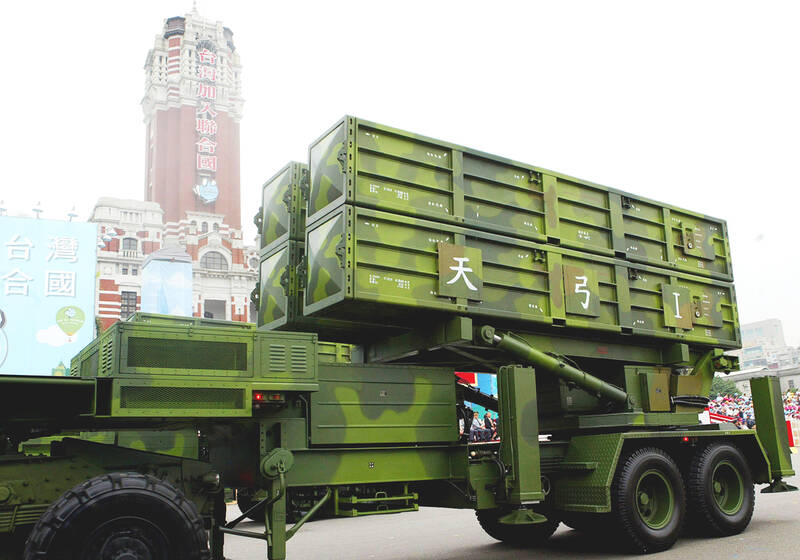
Photo: CNA
Chen shifted his focus to science, and eventually headed the Sky Bow (or Tian Kung, 天弓) project at National Chung Shan Institute of Science and Technology (國家中山科學研究院, NCSIST). In just six years, his team created and successfuly tested Taiwan’s first home grown surface-to-air missile defense system that boasted a longer range than the US Patriot system.
Research began in October 1980, and the system was tested and ready for official use in December 1986. According to Chen’s book, Sky Bow: Challenging a World Record (天弓: 我們的向世界之最挑戰), among similar missile systems in the world at that time, the Sky Bow was developed using the least amount of time and funding.
In a sense, Chen still achieved his dream, just on a much larger scale.
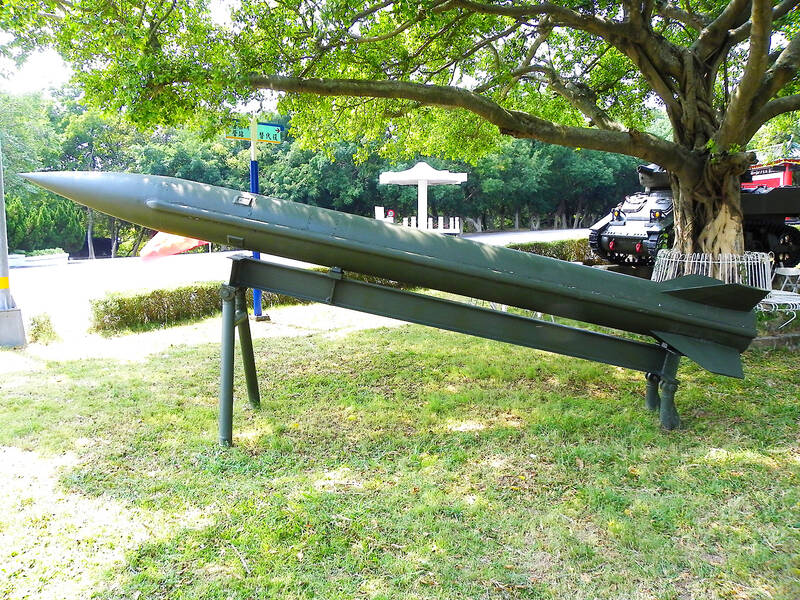
Photo courtesy of Wikimedia Commons
UNEXPECTED APPROVAL
With the US breaking diplomatic ties with Taiwan in 1979, the government started seriously looking into developing and building its own missile systems.
One major point of contention between Washington and Beijing was US arms sales to Taiwan, and in 1982 they signed the 817 communique where the US agreed that “its arms sales to Taiwan will not exceed, either in qualitative or in quantitative terms, the level of those supplied in recent years … and that it intends gradually to reduce its sale of arms to Taiwan.”
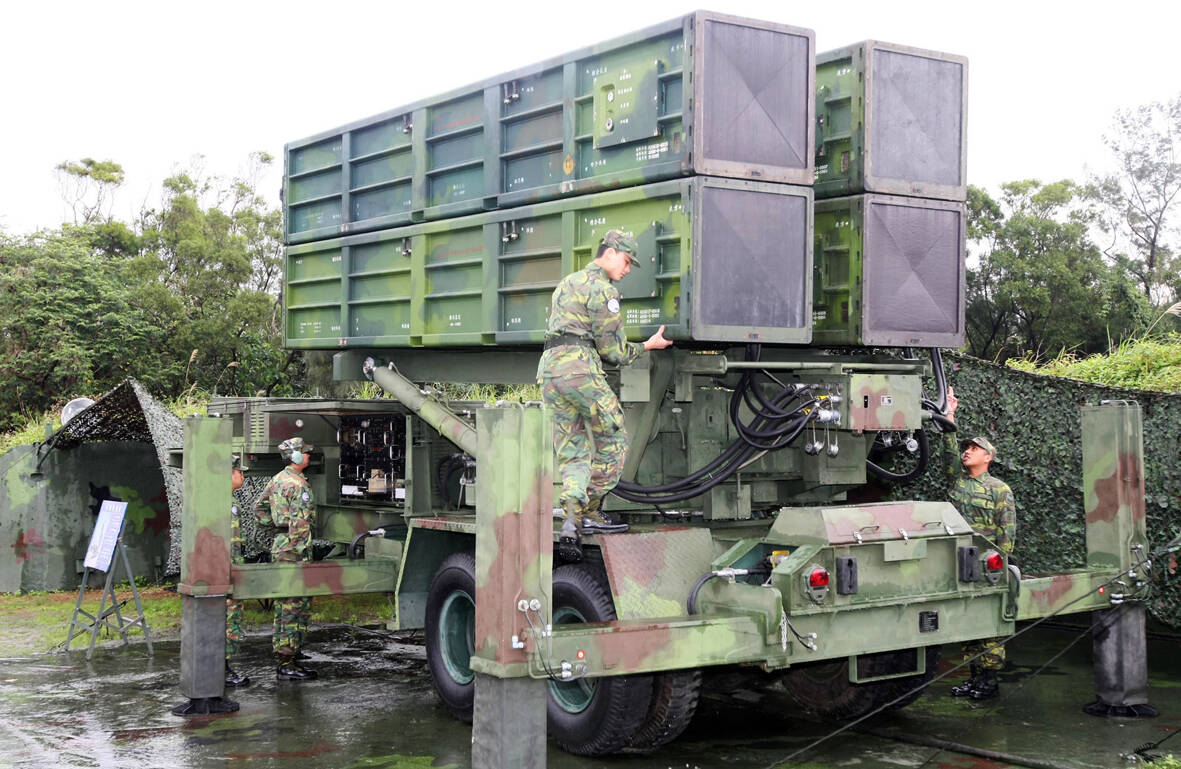
Photo: CNA
The Sky Bow project was initiated amid these concerns.
After his injury, Lee obtained his master’s degree in aerospace engineering from National Cheng Kung University and soon joined the NCSIST. Due to his promising performance, the government sent him to the University of Tennessee where he obtained his PhD. For his dissertation, he helped inspect and test the school’s new hypersonic wind tunnel, which is needed to test high performance missiles.
Chen continued his work on wind tunnels after returning home in 1975. Later, he was made head of the ballistics division and tasked on designing a homegrown ramjet, a type of engine used to propel missiles.
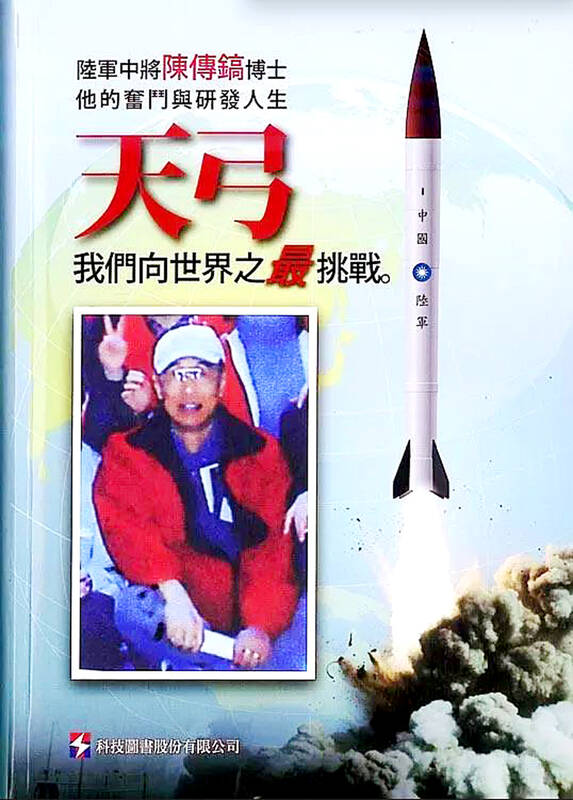
Photo courtesy of Eslite Book Store
In February 1980, renowned aerospace engineer and rocket scientist Huang Hsiao-tsung (黃孝宗) arrived in Chen’s department as a consultant. Huang was an expert in propulsion systems.
Chen explained to Huang what they were doing, mentioning that it would be ideal if they also developed a missile that they could test the ramjet with. Huang directly approached the Ministry of National Defense and to Chen’s surprise, obtained approval to build a completely self-designed ramjet engine and a “super-performance” missile.
The project was formally approved in October 1980. Chen came up with several names for it — including Sky Bow, Sky Horse (Pegasus) and Flying Horse.

Photo courtesy of Ministry of National Defense
“I suggested Sky Bow because the ramjet engine is like a carrier that delivers the missile into the sky, like a bow with an arrow,” Chen writes. “And horses because they are also used to carry things.”
The institute chose Sky Bow.
“Sky Bow back then only referred to the engine used to propel the warheads, it was totally different from the Sky Bow missiles that people are familiar with today,” he writes. “Many might find it strange that a missile is called a bow, but this is why.”
ECONOMICAL DEFENSE
Chen and his team had to think ahead for this project, predicting what military capabilities enemy fighter jets might develop over the next 20 to 30 years and designing the system around that.
At the start of the project, China’s People’s Liberation Army had about 4,000 MIG planes that could attack across the Taiwan Strait. Taiwan did not have the funds or space to house that many planes to counter China, and plus it was much cheaper to maintain one missile than one fighter jet.
“I believe that the Sky Bow is the most economical way to defend Taiwan’s airspace,” Chen writes.
Since Chinese planes could fire missiles at Taiwan from afar, the system needed to be able to shoot them down before they reached their effective range. Chen was sure that their range would increase greatly in the next decade.
The system should also be able to hit multiple targets at once — the Patriot could fire at six planes simultaneously, and Chen wanted the Sky Bow to at least do that.
Besides some instruments that they ordered from overseas, the team designed all the other components and had them built by local manufacturers. They even constructed Taiwan’s first hypersonic wind tunnel.
In March 1981, the Ministry of National Defense told the institute that they hoped to expand the Sky Bow project into a full surface-to-air missile defense system and greatly boosted funding for the following year.
Chen met with then-defense minister Sung Chang-chih (宋長志) in July, announcing his ambition to make the system as advanced as the US’s Patriot and the Soviet Union’s SAM-6. Sung promised to provide the funding and manpower required, under the condition that Chen finish it within seven years.
SILENCING THE DOUBTERS
Chen writes that almost nobody in NCSIST believed that he could do it. But he argued that they weren’t inventing something completely new, and there was much research and data to refer to.
Huang left the project in 1982 to become deputy chief of the institute, making Chen the primary leader of Sky Bow. Much of the early challenges entailed organizing a work team and navigating bureaucracy and egos, as many did not want to lend their hand to Sky Bow at the expense of their own work.
“The human difficulties were far greater than the technical ones,” Chen writes. “Fortunately, our basic team members were not only talented but pure-hearted and enthusiastic; they were just interested in technology and not politics.”
The first test in 1982 failed spectacularly as the missile slid off the launcher instead of firing. They kept trying, and by the 12th test in March 1986, the system finally hit the mock aircraft target to great fanfare.
The two types of missiles developed during the project were also named Sky Bow. On Oct. 30, 1986, more than 500 dignitaries attended the naming ceremony hosted by then-premier Yu Kuo-hua (俞國華). Yu pressed a button and a large ball descended from the ceiling, opening to reveal a model of the Zhongzheng 100 Sky Bow 1, referring to its 100km range.
Then army chief of general staff Hau Pei-tsun (郝柏村), who was in attendance, writes in the foreword of Chen’s book: “This project smashed the NCSIST’s previous conservative attitude of just imitation. Its completion inspired many new endeavors, and transformed the spirit of the institute.”
Taiwan in Time, a column about Taiwan’s history that is published every Sunday, spotlights important or interesting events around the nation that either have anniversaries this week or are tied to current events.

April 14 to April 20 In March 1947, Sising Katadrepan urged the government to drop the “high mountain people” (高山族) designation for Indigenous Taiwanese and refer to them as “Taiwan people” (台灣族). He considered the term derogatory, arguing that it made them sound like animals. The Taiwan Provincial Government agreed to stop using the term, stating that Indigenous Taiwanese suffered all sorts of discrimination and oppression under the Japanese and were forced to live in the mountains as outsiders to society. Now, under the new regime, they would be seen as equals, thus they should be henceforth

Last week, the the National Immigration Agency (NIA) told the legislature that more than 10,000 naturalized Taiwanese citizens from the People’s Republic of China (PRC) risked having their citizenship revoked if they failed to provide proof that they had renounced their Chinese household registration within the next three months. Renunciation is required under the Act Governing Relations Between the People of the Taiwan Area and the Mainland Area (臺灣地區與大陸地區人民關係條例), as amended in 2004, though it was only a legal requirement after 2000. Prior to that, it had been only an administrative requirement since the Nationality Act (國籍法) was established in

Three big changes have transformed the landscape of Taiwan’s local patronage factions: Increasing Democratic Progressive Party (DPP) involvement, rising new factions and the Chinese Nationalist Party’s (KMT) significantly weakened control. GREEN FACTIONS It is said that “south of the Zhuoshui River (濁水溪), there is no blue-green divide,” meaning that from Yunlin County south there is no difference between KMT and DPP politicians. This is not always true, but there is more than a grain of truth to it. Traditionally, DPP factions are viewed as national entities, with their primary function to secure plum positions in the party and government. This is not unusual
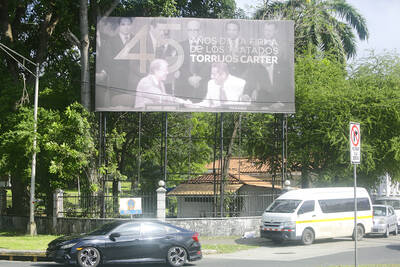
US President Donald Trump’s bid to take back control of the Panama Canal has put his counterpart Jose Raul Mulino in a difficult position and revived fears in the Central American country that US military bases will return. After Trump vowed to reclaim the interoceanic waterway from Chinese influence, US Defense Secretary Pete Hegseth signed an agreement with the Mulino administration last week for the US to deploy troops in areas adjacent to the canal. For more than two decades, after handing over control of the strategically vital waterway to Panama in 1999 and dismantling the bases that protected it, Washington has